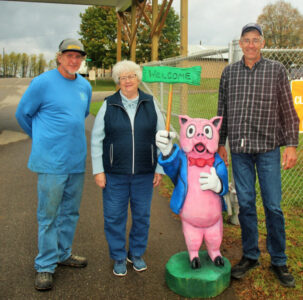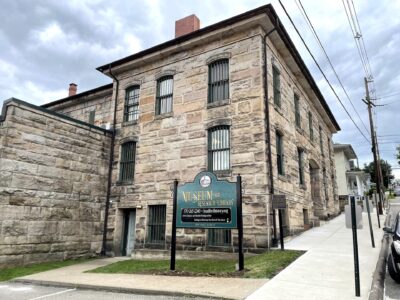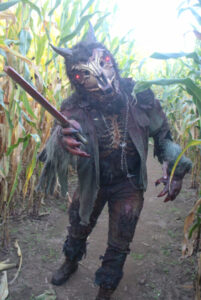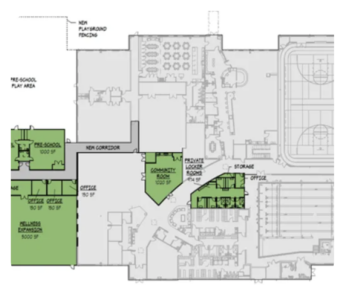Mary Slaughter: Founder of the Home for Aged Colored Women
“The answer to the prayers of elderly women in the late 1800s came through the tireless efforts of a former slave, Mary Slaughter,” said Annette English in her tribute, “Mary Slaughter Had a Heart Full of Love.” Slaughter was one of the most active philanthropists in Williamsport during the late 19th and early 20th centuries.
Most notably, Slaughter is remembered for the home that she established in Williamsport in 1897 for poor, elderly black women.
Her name lives on in the Mary Slaughter Apartments at 124 Brandon Place, apartments located where the Home for Aged Colored Women once stood. The Lycoming County Housing Authority now administers the apartment complex.
Slaughter settled in Williamsport in 1866, after the Civil War. Mary, her husband William, and their children had been slaves on the Myers Plantation in Martinsburg, W.Va.
They might have been familiar with Williamsport because of its place on the Underground Railroad. The city was prosperous and growing in those heady days of the lumbering era. The 1870 census indicated that Mary and William were living with their three children: Edward, 11, Charles, 8, and Wilbur, 1, on Washington Boulevard. Neither parent could read or write; Edward was in school. Another son, 15-year-old John Slaughter, was a servant in the Williamsport household of Newton Beck.
Williamsport’s population exploded during that time period, as blacks and whites, eager for the jobs created by the lumber industry, flocked to the city. As the population grew, so did the need for social services among both blacks and whites.
City women active
During the second half of the 19th century, women were instrumental in establishing several important social and welfare institutions in Williamsport – the Home for the Friendless in 1872, the Williamsport Hospital chartered in 1873, the Williamsport Hospital School of Nursing in 1883, and the Young Women’s Christian Association in 1893. The founding mothers of these notable organizations were women from the social and religious elite of Williamsport. Early board members included Mrs. Peter Herdic, Mrs. Allen Perley, Mrs. T. S. Clark, Dr. Jean Saylor Brown and Mrs. Edwin A. Rowley.
Mary Slaughter, the founder of the Home for Aged Colored Women, was not one of those elite. As a former slave, most likely she came to Williamsport with very little. Her husband William was not wealthy; he was a church janitor, a blacksmith, and a laborer until his untimely death from tuberculosis in 1886 when he was about 50.
Husband’s death
Perhaps it was his death and the loss of his income that led Mary to take boarders into her home. It was her boarding house on Walnut Street that in 1897 became the Home for Aged Colored Women. Mary was well known her charity – she fed neighborhood children whose parents were ill; she and William helped out others in need whenever they could. And they were active in their church – the First Baptist Church and later Bethel AME (African Methodist Episcopal) Church.
The Home for the Friendless provided care for needy children and elderly women, but there is no indication in their records that they provided services to African Americans. Mary Slaughter’s home moved to Brandon Place in 1899, the same year that the Home for the Friendless opened a new, larger home on Campbell Street; their former building had been filled to capacity.
Mary Slaughter provided care for women who, because of their race, might otherwise have had nowhere else to turn. In 1923, Williamsport journalist Dorothy Deane noted in the Williamsport Gazette and Bulletin that “she cares for them all, looks after the furnace, cooks the meals, sees that they are dressed and ready to receive their friends who regularly go to read with them or hold meetings, and she thanks God daily for His good to her and her old women.”
State funding
According to Annette English (Lycoming County Bicentennial Committee History Pamphlet, 1976), the original funding for the home came from local philanthropists, community donations, and the small fee that she charged – $10 a month. Slaughter later mortgaged the building, remodeled, and expanded. According to English, “Mary herself went to Harrisburg and personally appeared before the Senate legislative committee. Her lack of education and inability to read or write did not inhibit her earnestly speaking on behalf of her heart’s desire.” Mary won state funding for the Home, and she became its matron, a position she held for almost thirty years.
In the 1920s, Mary Slaughter returned to the Myers Plantation where she was born. An account of her trip was published in the Williamsport Gazette and Bulletin (Lou Hunsinger, Williamsport Sun-Gazette, Aug. 9, 2001). Mary had been a household slave on the plantation, working in the kitchen. The original owner of the plantation, Jacob Meyers, was very prosperous and owned many slaves. He built a mill on his property on Opequon Creek and lived in a lovely large stone house that had been built in the late 1700s.
Mary Slaughter reported that, at the time of her visit, the house was “falling down” and the plantation itself was desolate – the graveyard where Mary’s parents were buried “overgrown” and the slave cabin where she was born “falling away.”
Mary recounted that she had been married when she was 20 and had one son, John. Her husband, however, was sold soon thereafter and taken to Mississippi. She never saw him again. Several years later, she married William Slaughter, another fellow slave.
Mary’s children
It is not clear how many children Mary had or what happened to them.
The birth dates of Mary, William and the children are not recorded consistently in census records. Records for Storer College in Harpers Ferry, W.Va., one of the original historically black colleges, indicate that John Slaughter was a student there in the 1870s.
In Williamsport, he was a waiter at the Herdic House. Death records housed at the Lycoming County Genealogical Society indicate that an unnamed Slaughter child died in 1879 and that a son, William, died of tuberculosis in 1881, when he was 19.
Wilbur, a mill hand, married a Williamsport woman, Emma Werden, in 1901. In one newspaper interview, Mary reported that she had visited her two sons, who were living in Canada.
Mary Slaughter died on Jan. 14, 1934, at the State Hospital for the Insane in Danville.
She had been a resident there for about five years. I was not able to determine why she was sent there.
At her funeral, held in Williamsport at Page’s Chapel, the pastors from both First Baptist and Bethel AME churches honored her and her work. Mary Slaughter is buried at Wildwood Cemetery.
Although Mary herself died in 1934, the Home she established continued for 39 more years.
In 1960, its name was officially changed to the Mary Slaughter home for the Aged. In August 1973, its 13 residents were relocated and it closed its doors; the building could not meet state standards. The original building was razed and replaced with a new structure. The Mary Slaughter Apartments continue today to meet the housing needs of Lycoming County residents.
Sieminski is a retired libraran and manager of the Lycoming County Womens History Collection.
Her column is published the second Sunday of each month and she can be reached at life@sungazette.com.





